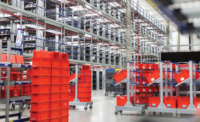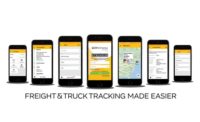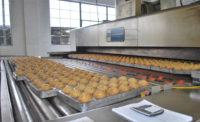Third-party logistics (3PL) can be useful when snack and bakery companies need to outsource logistics and distribution needs. These third-party companies can sometimes streamline productivity, since they’re able to handle multiple deliveries while keeping track of orders and quality control, among other benefits.
In 2018, the global 3PL market was valued at $728.6 billion and is expected to register a CAGR of 7.5% from 2019 to 2025, per the June 2019 “Third Party Logistics Market Analysis Report” from Grand View Research. As the report notes, companies that choose to outsource to 3PLs often have reduced risks, leaving more time to focus on the core of their own businesses, which can give them an advantage.
In the U.S., 3PL providers have experienced growth due to increased demand for efficient inventory management. The e-commerce industry has been growing, and with it comes increased freight transportation.
The report also notes that new technologies continue to streamline operations for the 3PL market. Cloud-based platforms can add flexibility and possibly value to outsourcing 3PL. Technologies like transportation management systems (TMS) and RFID (radio frequency identification) can play a role in differentiating between service providers, too. IoT-based services, which are growing in popularity, can also provide new avenues of growth, as an automated, “intelligent warehouse” can enhance efficiency, improve the logistics process, and reduce errors.
Crisis-mode logistics
3PL can help keep finished product storage and distribution running as smoothly as possible, even in a crisis like the 2019–2020 coronavirus pandemic.
“Third-party providers allow for greater flexibility and responsiveness as a crisis situation evolves. They can offer the ability to scale space and labor to meet dramatic fluctuations in demand like we’re seeing now. In facilities that serve multiple clients, staff can shift between accounts according to need. If one client has a lull in volume, associates can move to another area that is experiencing an increase,” says Bill Berg, vice president, regional warehouse operations, Saddle Creek Logistics Services, Lakeland, FL.
Providers like Saddle Creek with multiple locations have an additional level of flexibility, Berg adds. “This can help to mitigate risk if a crisis impacts a particular geographic area. One facility might be able to step in where another can’t.”
3PLs also give their clients access to a variety of transportation resources, so they’re not locked into a single transportation option, Berg notes. This flexibility is critical in times of crisis. “A 3PL’s experience in handling other supply-chain crises also can prove beneficial. For example, we’ve been able to apply expertise and best practices from helping clients through hurricanes and floods to the current situation.”
Anna Johnson, director of corporate development and marketing, United States Cold Storage, Camden, NJ, says that there is no shortage of food in its warehouses, so getting food to consumers is the first priority. “Cold-chain 3PLs often have facilities close to large consumer populations, which can make replenishment quicker for those items that have run low on stock. During peak season, we often see spikes in outbound shipments, so we have experience adjusting our workforce to handle higher volumes like we are seeing now.”
Addressing challenges
3PLs are uniquely positioned to tackle warehousing and distribution challenges, versus keeping those functions in-house at snack and bakery operations.
“The benefits we can provide a customer right now is twofold,” says Ian Hess, senior VP of brokerage operations, Nolan Transportation Group (NTG), Atlanta. “Firstly, we are able to handle all transportation needs for our customers so they can focus on managing their inventory and filling orders during these uncertain times. Secondly, we are seeing an increase in spot loads from customers because either their primary carriers cannot handle them, or they are receiving unplanned orders. This can cause a huge headache for shippers, and we are able to come in and provide additional capacity that shippers did not forecast or schedule.”
Having a trusted relationship with a 3PL allows shippers to leverage a quality network of carriers and advanced technology amidst market stressors, such as a crisis, says Hess. “3PLs are able to cater to the specific needs of the shipper and provide both digital and personal communication, from pickup to delivery.” 3PLs often have access to a large database of compliant carriers that can provide capacity for time-sensitive shipments and recovery freight. “With routing and matching technology, 3PLs find the best capacity for your shipment regardless of market conditions,” he notes, “but we find that the relationships and technology are specifically useful in a time of crisis.”
3PLs that store inventory for shippers are looking at various ways to keep transportation costs down, notes Hess. “3PLs need visibility into their shippers’ supply chains in order to see roadblocks, such as carrier fall off, loading times, and on-time percentages. With optimal visibility, 3PLs can discuss route and facility optimization to drive more-efficient operations.”
NTG leverages a proprietary TMS to provide optimal visibility through several integrations with top tracking providers, explains Hess. “With notes on every shipment, NTG can bring real-time data and actionable insights to shippers nationwide. Additionally, NTG can provide strategic drop trailer capabilities for shippers to leverage at their facilities—drop trailer pools, drop and hook freight, storage capacity, and more.”
Having more than one facility is a big plus for 3PLs, and is a benefit for snack and bakery companies that use them. “United States Cold Storage has 42 facilities across 13 states, which provides a breadth of storage options close to the consumer base. We also provide value-added services like repack to handle post-production activities. Food producers often have limited temperature-controlled storage space at manufacturing, which makes it challenging to store and repackage product,” Johnson says.
With the rise of coronavirus, it’s more important than ever that 3PLs step up, too. “More and more food companies are expanding their businesses online—and that shift is likely to intensify with the advent of COVID-19,” says Berg. “Making the move to ecommerce can be challenging for in-house warehouse and distribution operations, because it generally requires multiple distribution facilities, more labor and sophisticated technologies. These resources require a significant capital investment—not to mention internal expertise. In the long run, outsourcing to an established 3PL with direct-to-consumer experience and the necessary space, staffing, and technology can be more effective and economical.”
Cross-docking is another warehousing and distribution trend that 3PLs are particularly well equipped to help food companies leverage, Berg notes. “In our experience, products with a short shelf life, such as baked goods and snack foods, are good candidates for cross-docking. However, most in-house operations aren’t set up to receive products into the warehouse and ship them right back out instead of putting them in storage. Third-party providers proficient in cross-docking will have facilities designed to accommodate the practice, along with the systems, staff, and processes in place to ensure its effectiveness.”
Product customization or reconfiguration is another area where it makes sense to use a third-party provider, Berg comments. “For example, we routinely help clients with value-added services like kitting, labeling, and gift set assembly which can be time- and labor-intensive. Scalable staffing and facilities in multiple locations tend to give 3PLs greater flexibility than in-house operations. Positioning these services close to the end customer allows for greater responsiveness to consumer demand.”






